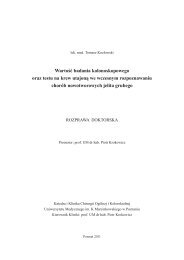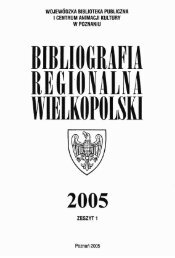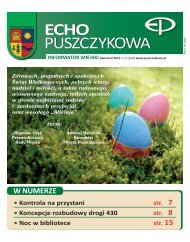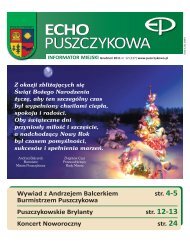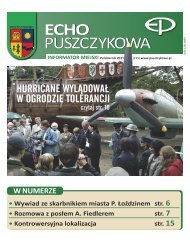MILITARY PHARMACY AND MEDICINE
MILITARY PHARMACY AND MEDICINE
MILITARY PHARMACY AND MEDICINE
Create successful ePaper yourself
Turn your PDF publications into a flip-book with our unique Google optimized e-Paper software.
© Military Pharmacy and Medicine • 2012 • 4 • 120 – 122similar means despised by the internationalcommunity, try to turn public attention to theirstatements or to force governments to succumbto their demands.”The other definition was created in 1996 by theFederal Bureau of Investigation and defined terrorismas: “unlawful use of force and violenceagainst people and possessions (ownership) inorder to frighten or force the government, civilianpopulation or any other sector of the statesystem to support political or social demands.”All definitions contain two fundamental elements:“fear” and “forcing behavior.” Moreover,a definition of a terrorist used by the Oxforddictionary emphasizes that a terrorist act is:“planned, calculated and premeditated” [2].Due to a growing demand among terrorists forattacks associated with an increasing numberof casualties and easier access to materials andtechnologies used for production of weapons ofmass destruction, we should conclude that theprobability of using chemical, atomic or biologicalweapons by terrorists is growing and becomesmore and more substantial.In contrast to chemical substances, biologicalmaterial (viruses and bacteria) is characterized bythe ability to reproduce and mutate. As a result,they become increasingly more dangerous andresistant with time. A single bacteria is capable ofdividing every 20 minutes. After 10 hours, we canobtain a billion of daughter cells. It directly followsthat it is relatively easy to produce a weaponcapable of killing millions of people.Anthrax bacilli (Bacillus anthracis) attack mainlysheep, cows and goats, which become infectedthrough the oral route. Bacteria is transmittedthrough water, insects, wild animals or birdsand their excretions. Human infections are rare.About 95% of cases constitute lighter forms of thedisease involving the skin. When (5% is sufficient)anthrax invades the lungs, patient usually dies.Bacteria are not transmitted from one humanto another and patient isolation is not necessary.Vaccines partially protect from anthrax, but theymust be administered repeatedly.On the basis of American simulations regardingthe toxicity of anthrax it was concluded, that anReview articleairplane drop of 50 kg of bacteria from 2000 monto a city with a population of 500 thousandpeople would result in 135 thousand of infectedpatients, 90 thousand of which would die [3].Relatively simple equipment, such as ordinaryfermenters, is needed for growing bacterial culturesand obtaining pathogens and toxins doesnot pose any problems.All of these “qualities” were and are known toterrorists and attempts were made to obtain theresources for bioterrorist attacks. Armed IslamicGroup (GIA) conducted experiments in thisrespect in a biological mini-laboratory in Paris.The AUM sect was preparing for a large-scaleattack with, among other things, biological agents.They employed scientists and technicians fromJapan and Russia. Professional laboratories werearranged. The sect was partially ready for productionof biological weapons, including anthrax, avery contagious disease called Q fever and probablythe deadly Ebola virus. Seriousness of thethreat is evidenced by the fact that it owned a special,double-turbine helicopter Mi-117 equippedwith instrumentation for chemical spraying. Italso conducted first biological attacks.In 1990, using a sprayer of their own construction,terrorists attacked Tokyo downtown withbotulin toxin. It turned out to be ineffective, butthere were two repeated attempts the same year.The scope of biological weapons used by terroristsincludes, beside the previously mentionedanthrax, botulin (also known as “sausage poison”),plague and smallpox. The latter, eradicatedaround the world in 1980, is still stored in twoplaces: Atlanta (USA) and Kolcovo (Russia).There are currently several visions of the worldthreatened by lab-modified microbes. Professors:Claire Fraser from Institute for GenomicsResearch in Rockville (Maryland) and MalcolmDando from the University of Bradford in GreatBritain are warning on the pages of “NatureGenetics” that rapidly progressing works ondecoding microbial DNA can serve developmentof new varieties of difficult to detect microorganisms,for which there are no vaccines or drugs.It is estimated that as soon as this year or in twoyears at the latest we should learn the sequenceof nucleotides of over 70 viruses and bacteria.Last year, molecular biologists drew a DNA120 http://military.isl-journals.com



